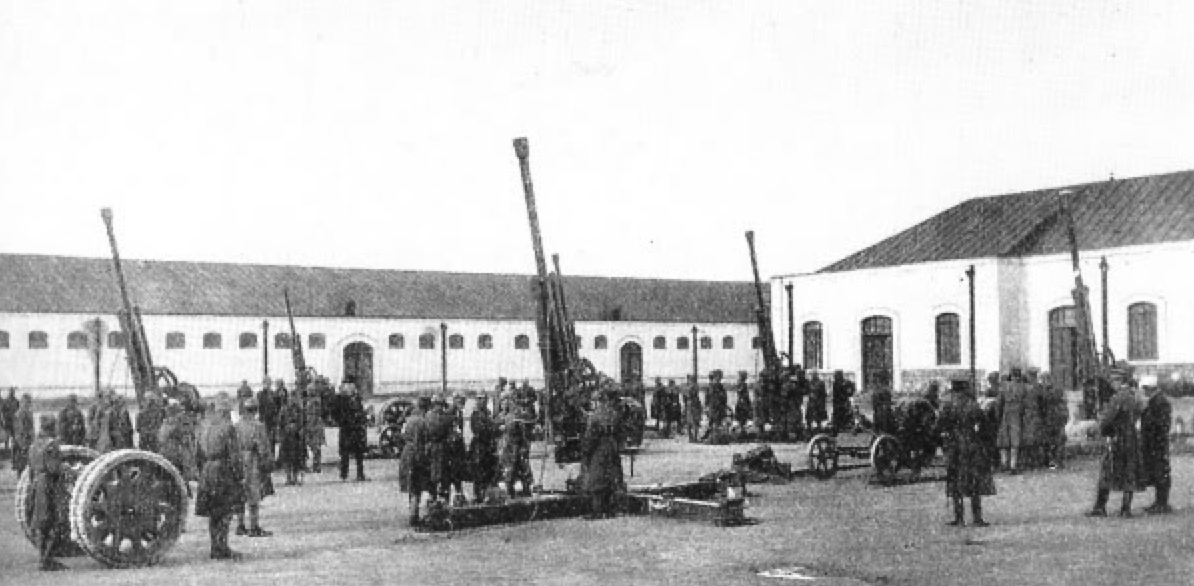Early 1900s-1925
The battered Iranian military had yet to recover from its devastating defeats at Russian and British hands in the first five decades of the 19th century which resulted in the losses of large chunks of territory, notably Herat and the South Caucasus. Another issue was vehement Russian (and latent British – esp. by the early 1900s) opposition to the revival and modernization of the Iranian army.
The Iranian military by the early 1900s was poorly organized with much of its equipment obsolete and inadequately maintained. There were small numbers of modern artillery and machine guns but at wholly insufficient quantities. This meant that Imperial Russian, British and Ottoman armies could enter Iranian territory at will.
By the end of World War One, Iran’s artillery corps was equipped with a chaotic motley left-over Ottoman, Russian and British, along with some numbers of German made MG-08 pieces and the Swedish Bofors 75mm mountain gun. Iranian Artillery Units: Early 1920s-1941 Iran’s inventory of artillery in 1922 stood at a modest total of just 86 pieces. This was dangerously inadequate for the task of defending the country’s borders, a fact fully understood by the new unified and modernized Iranian military force, which began its debut from the mid-1920s. Reza Shah placed a high priority towards the modernization and expansion of Iran’s armed forces, with the artillery corps receiving close attention. By 1941 Iran possessed 874 cannon, with 350 modern pieces (mainly light and medium calibers – some motorized) being ordered from overseas. The artillery force however continued to use antiquated equipment such as the 75mm Bofors mountain guns and the Shneider-Cruesot 75-mm cannon seen during the Constitutional revolution. Nevertheless, in just 19 years (1922-1941) Iran’s inventory of cannon had increased ten-fold. This was a remarkable achievement for a country which just years before, had had no true national army since the 19th century. By 1941, an Iranian Army regiment was equipped with 81mm mortars and six 37mm Skoda anti-tank guns. Hence (at least theoretically) this meant that the army’s 45 infantry regiments would have been equipped with minimum of 270 anti-tank guns and another 270 mortars. In practice however, these numbers were most likely less and not as evenly distributed among all the regiments. The organization of the army’s artillery units are believed to have been as follows at the eve of the Anglo-Russian invasion of Iran on August 25, 1941 (assuming that each battery was composed of four artillery pieces): Each regiment possessed three mountain batteries and one field battery. Excepting the mountain guns that were carried by pack mules, the artillery of the mechanized brigade was transported by Marmon Herrington vehicles. The rest of the artillery was drawn by horses. The above statistics and corresponding information are of course subject to revision as more data is uncovered by future research.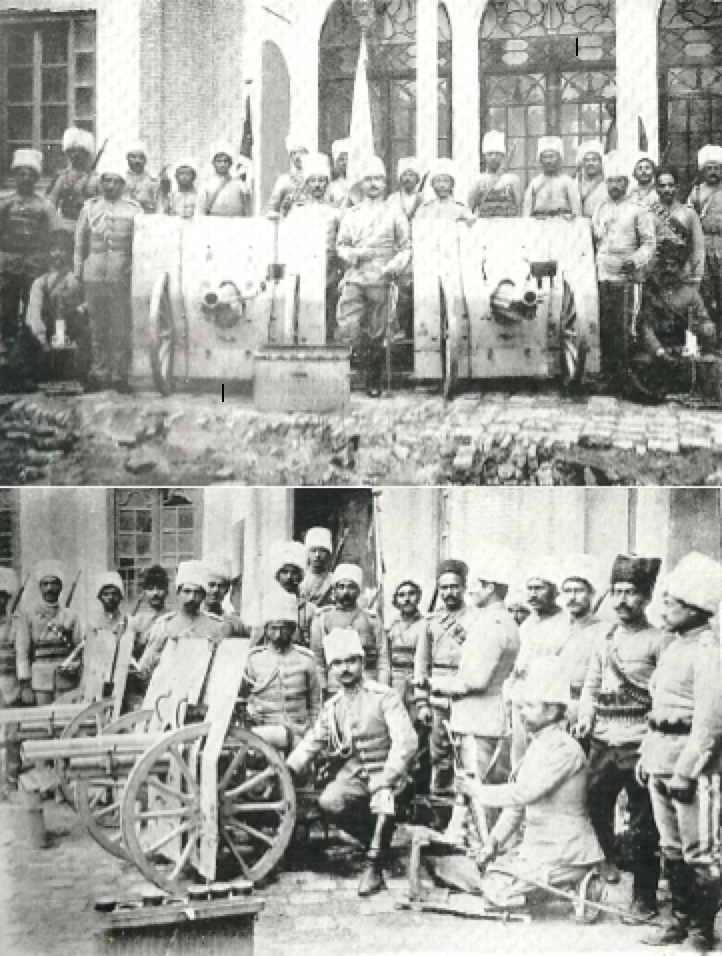
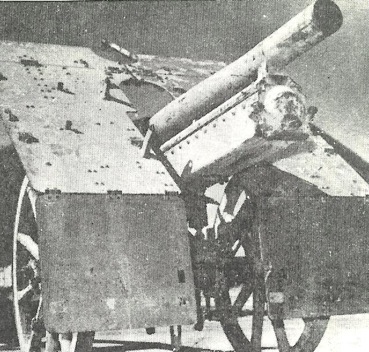 An old undated photo of an Iranian Swedish made Bofors 75mm mountain gun. These had seen service with the Iranian army since the early 20th century. Four of these have survived to this day, now on display at the gates of the Gilan barracks in northern Iran (Picture Source: Matofi, A., 1999, Tarikh-e-Chahar Hezar Sal-e Artesh-e Iran: Az Tamadon-e Elam ta 1320 Khorsheedi, Jang-e- Iran va Araqh [The 4000 Year History of the Army of Iran: From the Elamite Civilization to 1941, the Iran-Iraq War]. Tehran:Entesharat-e Iman, p. 1043).
An old undated photo of an Iranian Swedish made Bofors 75mm mountain gun. These had seen service with the Iranian army since the early 20th century. Four of these have survived to this day, now on display at the gates of the Gilan barracks in northern Iran (Picture Source: Matofi, A., 1999, Tarikh-e-Chahar Hezar Sal-e Artesh-e Iran: Az Tamadon-e Elam ta 1320 Khorsheedi, Jang-e- Iran va Araqh [The 4000 Year History of the Army of Iran: From the Elamite Civilization to 1941, the Iran-Iraq War]. Tehran:Entesharat-e Iman, p. 1043).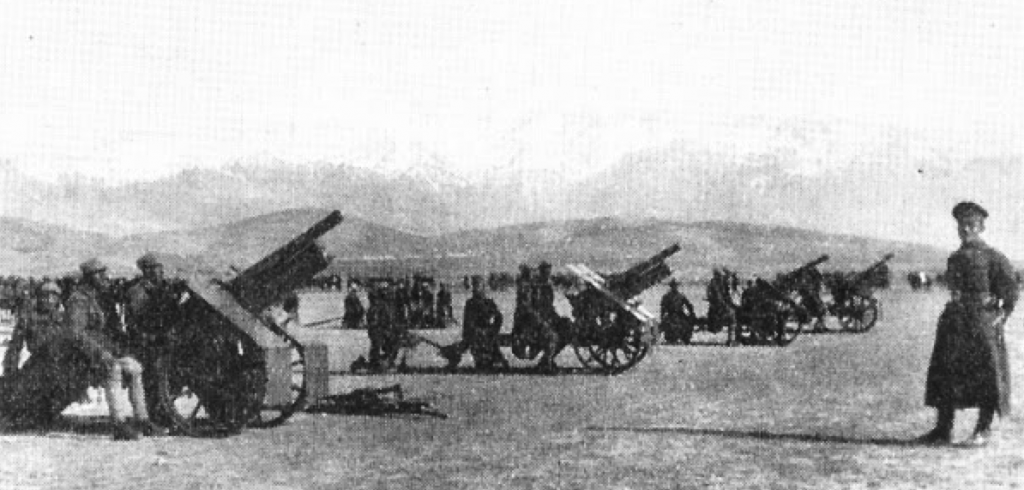 [Click to Enlarge] Iranian artillery unit of 75mm Bofors mountain guns (Picture Source: Network54).
[Click to Enlarge] Iranian artillery unit of 75mm Bofors mountain guns (Picture Source: Network54).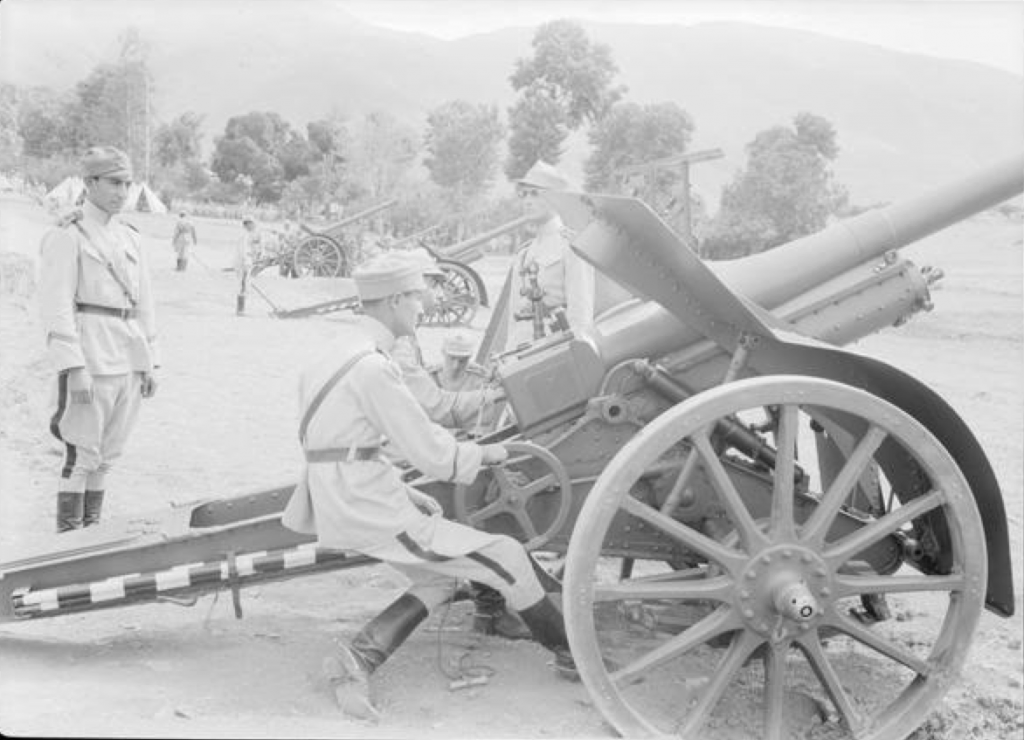 [Click to Enlarge] Iranian artillery unit of 105mm Skoda artillery pieces (Picture Source: Network54).
[Click to Enlarge] Iranian artillery unit of 105mm Skoda artillery pieces (Picture Source: Network54).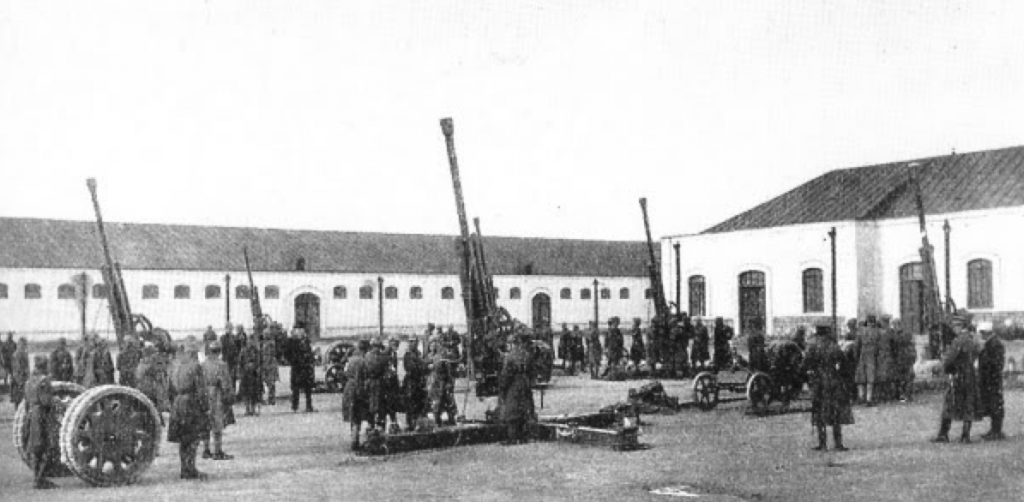 [Click to Enlarge] Iranian artillery unit of 75mm Bofors anti-aircraft artillery (Picture Source: Network54). At least another twenty of these which had been on order were never delivered to Iran.
[Click to Enlarge] Iranian artillery unit of 75mm Bofors anti-aircraft artillery (Picture Source: Network54). At least another twenty of these which had been on order were never delivered to Iran.

